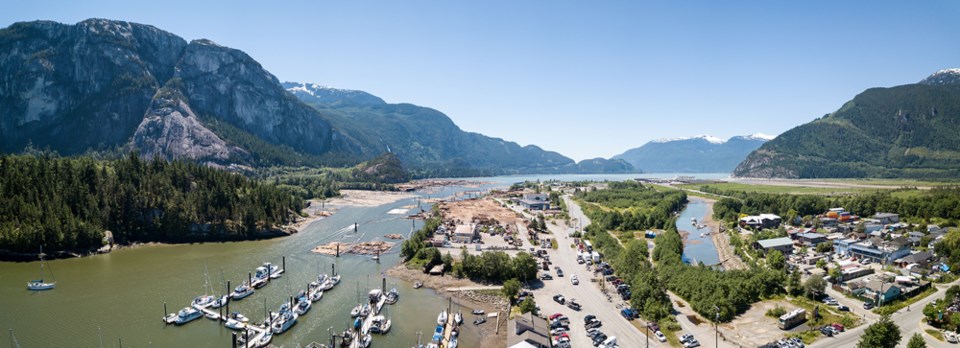It may come as a surprise, even to some long-time Squamish residents, that Mount Garibaldi (‘Nch’Kay’ ) with its tranquil snow-capped exterior is a potentially active stratovolcano. In other words, one of our most iconic geological features may eventually blow its stack, just like Mount St. Helens. Still, the likelihood of that happening in the immediate future is low. But the concept is certainly an apt metaphor for the social and economic instability that could engulf us sooner than later.
We are at a crossroads. There is a strong possibility this town will become the enviable model community projected in official declarations emanating from the District of Squamish and other sources. Conversely, we might end up following the trajectory of numerous over-ambitious localities that have experienced the harmful consequences of unbridled development.
For the second time in three years, BC Business magazine selected Squamish as the best place to work in the province. The authors of that report reveal that we owe our top billing to several factors, including fast-rising incomes, above average housing starts, generous spending on recreation and rapid population growth.
But that rosy assessment has limitations. The most recent Squamish Vital Signs survey revealed that 39 per cent of respondents indicated they could not afford to engage in the activities they enjoy. And as The Chief reported last May, the high cost of renting has become the new normal. Nearly 40 per cent of Squamish renters are spending more than the accepted threshold for housing.
As well, abundant consideration must be given to assessing the ramifications of our prevailing high density, stack and pack condo landscape. Failure to do so will lead to social tensions and undermine the quality of life for many residents. A combination of unbridled population growth, coupled with a lack of adequate services, amenities, and timely infrastructure upgrades, will inevitably lead to problems down the road.
BC Business magazine claims the average household income in Squamish is $116,171 and the average household income for residents who are under 35 is $77,294. But according to the Squamish Vital Signs report, in 2016 a quarter of all earners were not making a living wage because they had an annual income under $20,000. That figure is five percentage points below the national level (30 per cent) and seven percentage points below the provincial standard (32 per cent). And 37 per cent of all income earners had an income of less than $30,000, six percentage points below the rest of the country (43 per cent) and eight percentage points below the provincial level (45 per cent).
All told, we should be concerned about a wage structure that leaves many workers struggling in a community where the cost of living is increasing at a rate faster than both the national and provincial averages.
As much as some of the above observations could be construed as an overly pessimistic assessment of a town with plenty of upsides, they are meant to provide a sobering reality check in the face of a potentially volatile future.



